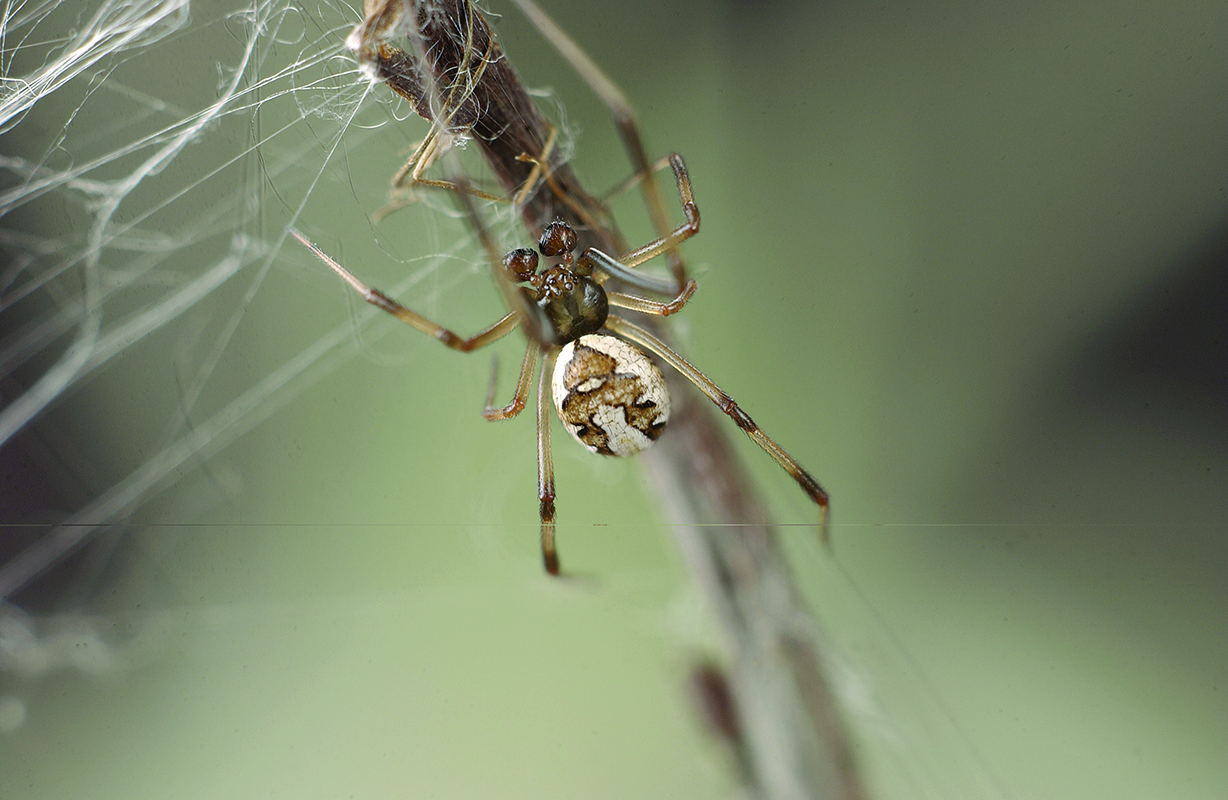Male Widow Spiders Survive Sex by Mounting Immature Virgins

For some species of spiders, mating comes with a deadly risk — the possibility of being eaten by their much larger female partner. But in two species of widow spiders — the venomous spider group that includes black widows — males deploy an ingenious strategy to avoid being cannibalized during sex, according to a new study.
Scientists recently discovered that widow spider males Latrodectus hasselti and Latrodectus geometricus prefer to mate with females that are not yet sexually mature but which still have internal structures that are capable of storing sperm, which the males access by piercing the female's exoskeleton.
This sexual sneak attack is a win-win situation for the male. He literally plants the seeds to successfully fertilize the female at a later date, and is able to scuttle away from the encounter with his dignity — and his head — intact. [In Photos: The Amazing Arachnids of the World]
Sexual cannibalism is common in widow spiders, but males mating with immature females to avoid being cannibalized is behavior that was previously unheard of, the researchers wrote in a new study.
Study co-author Maydianne C. B. Andrade, a professor in the Department of Biological Sciences at the University of Toronto, Scarborough, has studied widow spiders for nearly two decades, but had never observed this behavior until recently. She told Live Science in an email that it was first brought to her attention by a member of her research team — M. Daniella Biaggio, the study's lead author.
Biaggio reported that not only were the males mounting immature females, but they were also difficult to separate from their partners.
Once the scientists realized that the spiders were mating, they isolated the females and later found that their eggs had been successfully fertilized, noting in the study that the females molted normally and subsequently produced offspring, even though they had not mated as adults.
Get the world’s most fascinating discoveries delivered straight to your inbox.
Andrade explained that after she presented her preliminary findings at a conference, she was approached by another scientist, Yael Lubin from Ben-Gurion University of the Negev, whose doctoral students Iara Sandomirsky and Ally R. Harari had observed similar behavior in widow spiders. The researchers decided to combine their efforts in a new study investigating the activity that had been hiding in plain sight.
"Dani Biaggio and Iara Sandomirsky discovered the behaviors," Andrade said. "They brought 'new eyes' to the system."
This mating strategy is challenging for males — the window of opportunity for finding a female that has recently developed her sperm-storing receptacles but is not yet sexually mature is small, Andrade explained. And there is still much to be learned: How the males even find the immature females, which don't produce the signature "come hither" pheromones that mature females emit; what the physical cost is to females that are fertilized before they're sexually mature; and how widespread this behavior is — not just in widows, but in other sexually cannibalistic spider species as well.
"The focus in widow research has largely been on cannibalism and related phenomena; very few field studies include a systematic examination of behavior throughout the lifespan," Andrade said in an email. "I suspect this will change," she added.
The findings were published online Sept. 21 in the journal Biology Letters.
Original article on Live Science.

Mindy Weisberger is a science journalist and author of "Rise of the Zombie Bugs: The Surprising Science of Parasitic Mind-Control" (Hopkins Press). She formerly edited for Scholastic and was a channel editor and senior writer for Live Science. She has reported on general science, covering climate change, paleontology, biology and space. Mindy studied film at Columbia University; prior to LS, she produced, wrote and directed media for the American Museum of Natural History in NYC. Her videos about dinosaurs, astrophysics, biodiversity and evolution appear in museums and science centers worldwide, earning awards such as the CINE Golden Eagle and the Communicator Award of Excellence. Her writing has also appeared in Scientific American, The Washington Post, How It Works Magazine and CNN.



